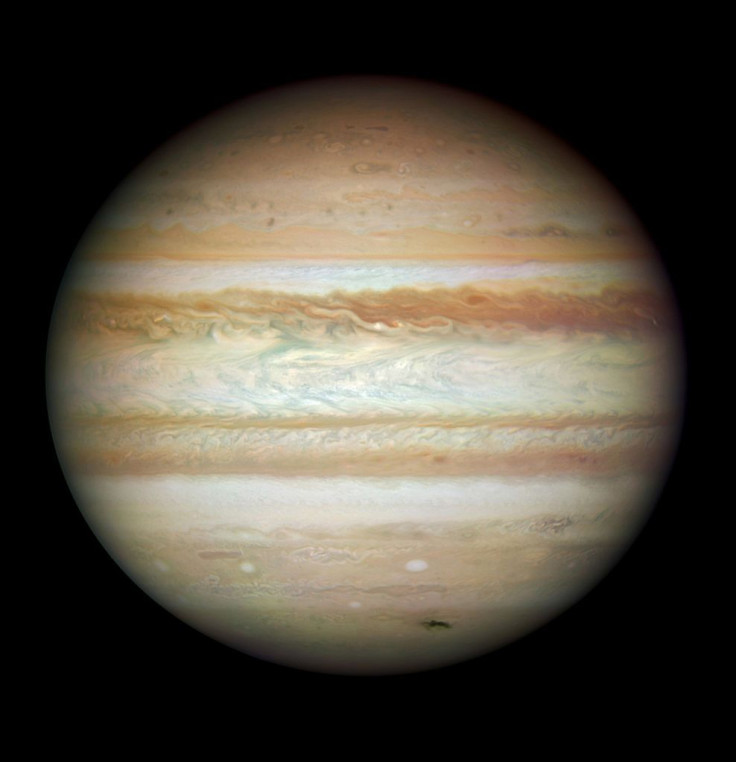Jupiter, Saturn Shocking Findings Are Making Scientists Reevaluate What They Know About Planets

Jupiter and Saturn missions have provided a lot of data that has helped scientists unlock the mysteries behind the formation of the planets in our solar system and their behavior. But now, NASA's Juno and Cassini spacecrafts may have just revealed findings that contradict what we know about how planets form and behave.
Caltech's David Stevenson explained in a statement that the data the Juno and Cassini missions sent back regarding Jupiter's and Saturn's magnetic and gravitational field have been "invaluable but also confounding." Stevenson, who will present an update of the two NASA missions at the 2019 American Physical Society March Meeting in Boston this week, added that the findings have given them a clearer picture of how Jupiter and Saturn formed.
"Although there are puzzles yet to be explained, this is already clarifying some of our ideas about how planets form, how they make magnetic fields and how the winds blow," Stevenson said.
A collaboration between NASA, the European Space Agency, and the Italian Space Agency, the Cassini–Huygens spacecraft was launched in 1997 to gather data around Saturn. The Cassini orbited around the gas giant for 13 years before dying a fiery death when it plunged into Saturn's interior in 2017.
Meanwhile, the $1.1 billion Juno mission launched in 2011, and the spacecraft has been orbiting Jupiter for two and a half years now. Juno's instruments are powered by solar energy alone and designed in a way that they can withstand the fierce radiation while orbiting the gas giant.
Stevenson explained that they made use of the microwave sensor installed in the Juno spacecraft to "figure out the deep atmosphere." From this, they learned surprising details about Jupiter, such as the fact that its atmosphere is evenly mixed.
"Any explanation for this has to be unorthodox," Stevenson said.
Scientists speculated that the explanation for Jupiter's evenly mixed atmosphere may have something to do with weather events producing large amounts of ice, liquids and gas in different parts of the atmosphere. However, scientists need more data to confirm why exactly the planet's atmosphere appears this way.
Juno's gravity and magnetic sensors also revealed some data that baffled scientists. The magnetic field showed spots, or regions of anomalously high or low magnetic field. There is also a striking difference between the northern and southern hemispheres of Jupiter, which Stevenson said was "unlike anything we have seen before."
Juno's gravity data showed that there are elements amounting to more than 10 times the mass of Earth in the midst of Jupiter, which is at least 90 percent hydrogen and helium by mass. But the heavier elements are mixed in with the hydrogen above, often in the form of a metallic liquid, instead of concentrated in a core.
Juno's and Cassini's data gave scientists a deeper insight into what goes on the outer parts of Jupiter and Saturn. The outer layer's role in the generation of the two planets' magnetic fields is larger than expected, according to the findings. At the moment, there is a need for experiments mimicking Jupiter's and Saturn's pressures and temperatures in order to get a better understanding of the processes that are going on.
But while the new data is surprising and seems to reveal more mysteries than answers, Stevenson, who has studied gas giants for four decades, said that this counted as a successful mission.
"Science would be boring if it merely confirmed what we previously thought," he said.
Meanwhile, Juno will soon be joined by another NASA mission, the Europa Clipper. However, the Clipper's mission will focus on Jupiter's icy moon, Europa, where it will gather data in order for scientists to determine if it is habitable. The mission will attempt to find if Europa has liquid water, chemical ingredients and energy sources sufficient to enable biology — all three necessary ingredients for life.
The Europa Clipper is set to be launched in the 2020s, according to NASA's website.
© Copyright IBTimes 2024. All rights reserved.





















